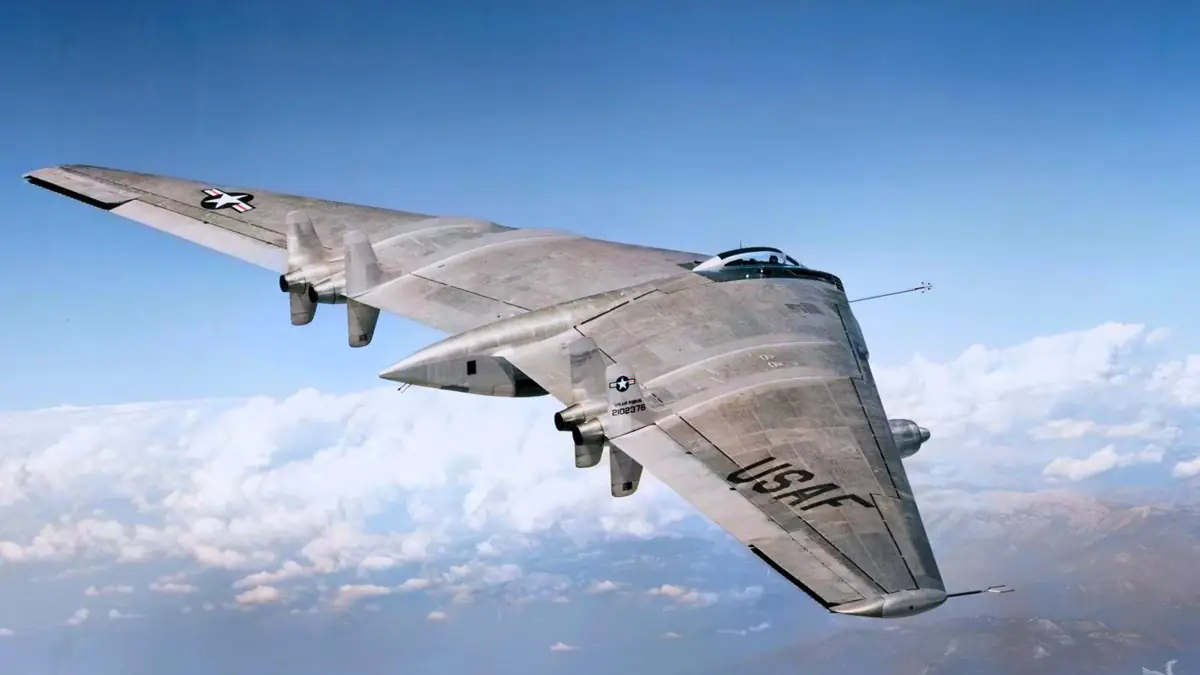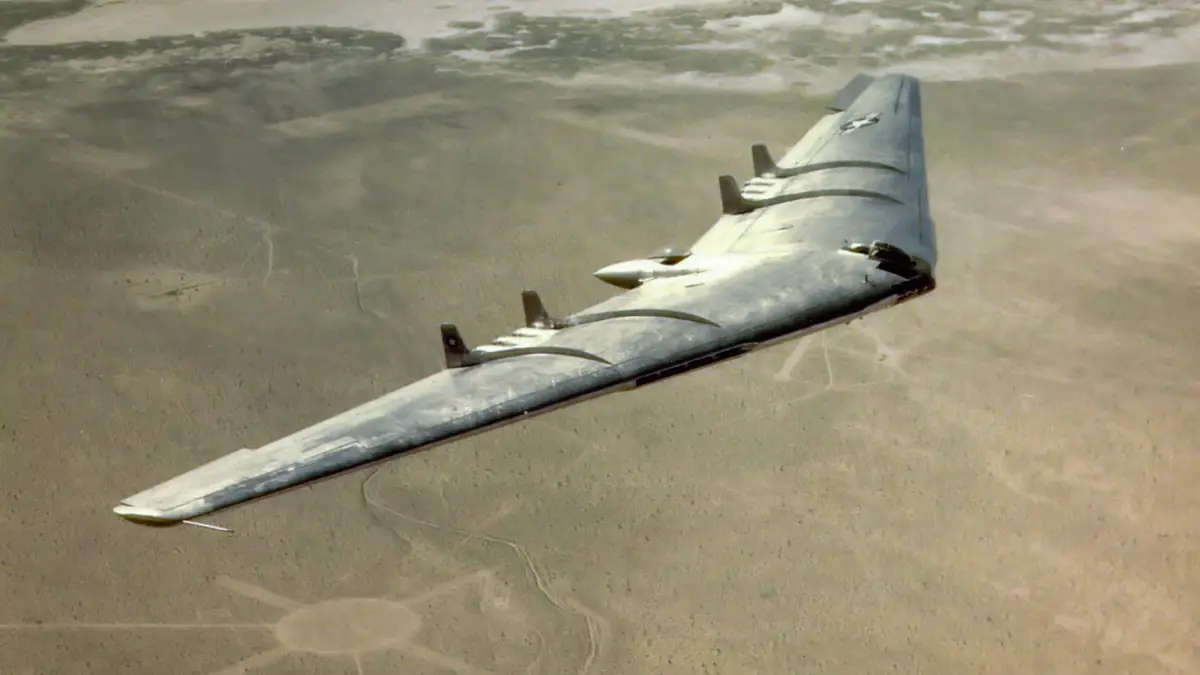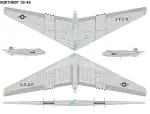Among “flying wing” aircraft, the YB-49 and YRB-49, designed by Northrop in 1946, were perhaps the most outstanding and aerodynamically advanced planes of their time.
A heavy “flying wing” aircraft undoubtedly surpasses conventional heavy aircraft in terms of drag, range, speed, and payload capacity with the same power plant. This is because the weight in a “flying wing” is distributed over a large wing area, allowing for a lighter construction. As a result, the “flying wing” offers a very favorable ratio of total weight to empty weight.

Read also: Lesser-Known Pages of Aviation History: Bell X-1 – The First Supersonic Aircraft
The Northrop YB-49 bomber and the YRB-49 reconnaissance aircraft were developed based on the YB-35, an experimental piston-engine bomber created with the “flying wing” design between 1941 and 1945.

The main difference between the YB-49 and YRB-49 was that the bomber was powered by eight Allison J-35-A-5 turbojet engines, each producing 1,820 kg of thrust, mounted in the wing. In contrast, the reconnaissance aircraft YRB-49 had six Allison J-35-A-21 turbojet engines, each producing 2,540 kg of thrust. Four of these engines were mounted in the wing, while the remaining two were mounted on pylons under the wing.
Two prototypes of the YB-49 bomber were built, one of which made its first flight on October 21, 1947. The aircraft completed a flight of 5,550 km with an average speed of 610 km/h.
Main characteristics of the Northrop YB-49:
- Takeoff weight: 97,000 kg
- Empty aircraft weight: 40,000 kg
- Maximum speed at an altitude of 9000 m: 835 km/h.
The YRB-49A was designed for photographic reconnaissance. Its first flight took place on May 4, 1950. By the time the Air Force decided to discontinue work on the project, only one YRB-49A had been built and flight-tested.
Main characteristics of the Northrop YRB-49:
- Takeoff weight: 94,000 kg
- Empty weight: 40,200 kg
- Length: 16.2 m
- Height: 4.57 m
- Wingspan: 52.5 m
As you can see, the YB-49 project was not in vain. All the developments and knowledge gained by the manufacturer during the testing of this and previous “flying wing” aircraft were used in the design and construction of the modern strategic bomber Northrop B-2 Spirit, which was built using stealth technology.

Read also: “Invisible” Aircrafts: How Stealth Technology Works in Aviation














